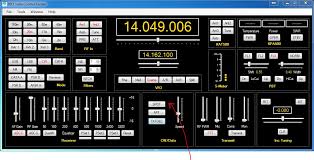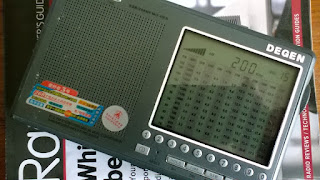 This Spewed Out of the Internet #34
This Spewed Out of the Internet #34
 Here’s some more wonderful stuff flowing from the internet.
Here’s some more wonderful stuff flowing from the internet.
The FCC slams police radio jammer with a $400k fine. Yay, FCC.
Gary KN4AQ (HamRadioNow.tv) explains that YOU SHOULD NOT CALL CQ ON A REPEATER. Or something like that.
Remember, if Summits On The Air is taking over your life, SOTANA May Be Right For You. Ask your doctor before taking any medication.
Here’s a fun video from Keysight Technologies that explains electrical current. What is Electric Current?
Check out the Yaesu FT-65 product review on HamRadioSchool.com.
If you are using DMR, take a look at this list of DMR talkgroups on the Utah DMR web site.
I wrote a Shack Talk article about radio frequency nomenclature: HF/VHF/UHF…stuff like that. What the Heck is UHF Anyway?
The Dayton/Xenia Hamvention is coming up next weekend. There’s some good info available on the Hamvention web site.
 Field Day is coming up June 24-25, see the full information here. Get your Field Day supplies from the ARRL here. Check out the professional Field Day promotional video from the ARRL. Nice job, ARRL HQ!
Field Day is coming up June 24-25, see the full information here. Get your Field Day supplies from the ARRL here. Check out the professional Field Day promotional video from the ARRL. Nice job, ARRL HQ!
The post This Spewed Out of the Internet #34 appeared first on The KØNR Radio Site.
Bob Witte, KØNR, is a regular contributor to AmateurRadio.com and writes from Colorado, USA. Contact him at [email protected].
 Customer service excellance
Customer service excellance
Lets move along to another class act.....I have been using Win4k3 suite software for rig control for over a year now. Tom VA2SFQ has software what will work with the Elecraft K3,K3S, KX3 and KX2. Tom has been updating the software on a very consistent basis. The software is very stable one just has to read Eham to see it's rated 4.9 out of 5. I have emailed Tom with some questions and he has replied very fast with a solution. Recently I had some issues and we were emailing back and forth to try to bring things to a resolution. On the weekend Tom asked me if I had Teamviewer (and I do) he wanted to use Teamviewer to take control of my PC and solve my issue once and for all. On Saturday evening I received a call from Tom on my cell and we linked my PC via Teamviewer and Tom took control. Tom stuck with me for 40 mins and he solved my issue and I was up and running again. I have never in all my days had this type of customer service. It is very obvious that Tom is committed to not only his software but to his customers. Tom was very pleasant on the phone as he sorted out the problem.
Mike Weir, VE9KK, is a regular contributor to AmateurRadio.com and writes from New Brunswick, Canada. Contact him at [email protected].
 Customer service excellance
Customer service excellance
Lets move along to another class act.....I have been using Win4k3 suite software for rig control for over a year now. Tom VA2SFQ has software what will work with the Elecraft K3,K3S, KX3 and KX2. Tom has been updating the software on a very consistent basis. The software is very stable one just has to read Eham to see it's rated 4.9 out of 5. I have emailed Tom with some questions and he has replied very fast with a solution. Recently I had some issues and we were emailing back and forth to try to bring things to a resolution. On the weekend Tom asked me if I had Teamviewer (and I do) he wanted to use Teamviewer to take control of my PC and solve my issue once and for all. On Saturday evening I received a call from Tom on my cell and we linked my PC via Teamviewer and Tom took control. Tom stuck with me for 40 mins and he solved my issue and I was up and running again. I have never in all my days had this type of customer service. It is very obvious that Tom is committed to not only his software but to his customers. Tom was very pleasant on the phone as he sorted out the problem.
Mike Weir, VE9KK, is a regular contributor to AmateurRadio.com and writes from New Brunswick, Canada. Contact him at [email protected].
 ICQ Podcast Episode 237 – RTTY
ICQ Podcast Episode 237 – RTTY
In this episode, Martin M1MRB / W9ICQ is joined by Chris Howard M0TCH, Martin Rothwell M0SGL, Dan Romanchik KB6NU and Ed Durrant DD5LP to discuss the latest Amateur / Ham Radio news. Colin M6BOY rounds up the news in brief, and this episode’s feature is RTTY by Bill Barnes N3JIX
We would like to thank Scott McDonald (KA9P/ZF2SC) and our monthly and annual donors for keeping the podcast advert free. To donate, please visit - http://www.icqpodcast.com/donate
- Chinese Takeover Raises Fear for Police Radio Security
- Man Fined for Writing 'I Am An Engineer'
- Armed Forces Day Crossband Military/Amateur Radio Communications Test
- New MF and LF US Bands Not Available Yet
- Successful Radio Symposium Supported by Harvard Wireless Club
- Taiwan to Drop Ham Radio Morse Code Test
- Antenna Insulators
- WRTC 2018 Plans Greater Youth Participation
- Malta Arrive on 5 MHz
Colin Butler, M6BOY, is the host of the ICQ Podcast, a weekly radio show about Amateur Radio. Contact him at [email protected].
 ICQ Podcast Episode 237 – RTTY
ICQ Podcast Episode 237 – RTTY
In this episode, Martin M1MRB / W9ICQ is joined by Chris Howard M0TCH, Martin Rothwell M0SGL, Dan Romanchik KB6NU and Ed Durrant DD5LP to discuss the latest Amateur / Ham Radio news. Colin M6BOY rounds up the news in brief, and this episode’s feature is RTTY by Bill Barnes N3JIX
We would like to thank Scott McDonald (KA9P/ZF2SC) and our monthly and annual donors for keeping the podcast advert free. To donate, please visit - http://www.icqpodcast.com/donate
- Chinese Takeover Raises Fear for Police Radio Security
- Man Fined for Writing 'I Am An Engineer'
- Armed Forces Day Crossband Military/Amateur Radio Communications Test
- New MF and LF US Bands Not Available Yet
- Successful Radio Symposium Supported by Harvard Wireless Club
- Taiwan to Drop Ham Radio Morse Code Test
- Antenna Insulators
- WRTC 2018 Plans Greater Youth Participation
- Malta Arrive on 5 MHz
Colin Butler, M6BOY, is the host of the ICQ Podcast, a weekly radio show about Amateur Radio. Contact him at [email protected].
 First SOTA Activation: H-44 Benchmark (W0C/SP-130)
First SOTA Activation: H-44 Benchmark (W0C/SP-130)
With the most recent release of the W0C ARM, there were 61 summits added to the Colorado SOTA list. I noticed that one of the new summits, H-44 Benchmark (W0C/SP-130) was easy to access, easy to climb and was in the vicinity of our mountain cabin. Surely, we needed to check it out and perhaps be the first ones to activate it.
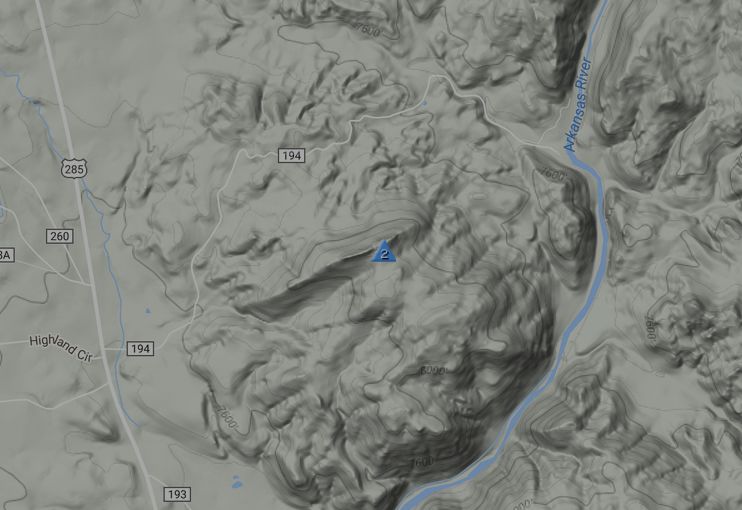 To get there, take Highway 285 south out of Buena Vista (or north from Salida), exiting at County Road 194 clearly marked as Hecla Junction. As you travel east, the road climbs then tops out. Soon after the road started to descend, Joyce K0JJW and I stopped and parked at lat/lon: N38.64998 deg, W106.06747. I don’t think where you park is critical but be aware that this road can get busy during the summer with the many rafting outfitters taking out at Hecla Junction (on the Arkansas River). There are two driveways heading south near where the road crests…we opted to stay to the east of these. One of them appears to be a campsite and the other leads to a house/cabin.
To get there, take Highway 285 south out of Buena Vista (or north from Salida), exiting at County Road 194 clearly marked as Hecla Junction. As you travel east, the road climbs then tops out. Soon after the road started to descend, Joyce K0JJW and I stopped and parked at lat/lon: N38.64998 deg, W106.06747. I don’t think where you park is critical but be aware that this road can get busy during the summer with the many rafting outfitters taking out at Hecla Junction (on the Arkansas River). There are two driveways heading south near where the road crests…we opted to stay to the east of these. One of them appears to be a campsite and the other leads to a house/cabin.
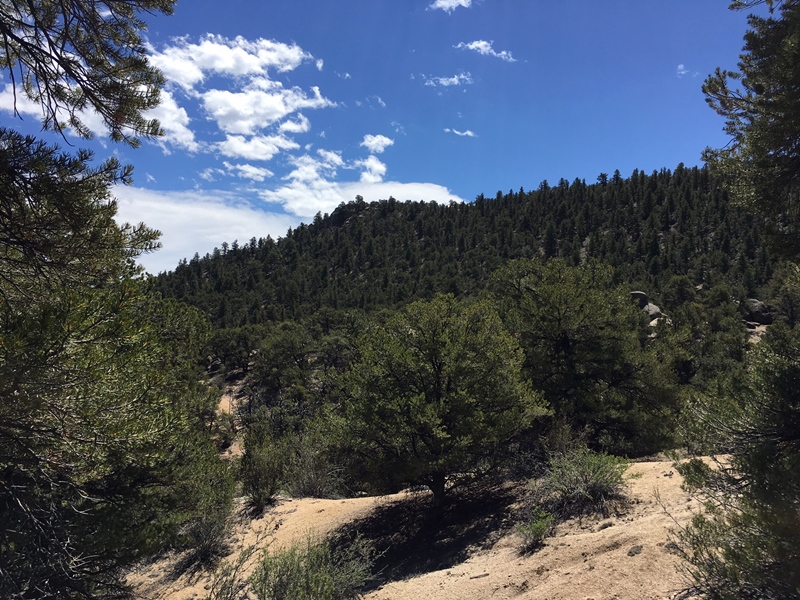
We proceeded south towards the visible summit, looking ahead to find a route that did not have too many ups and downs. There are many options and there was not much downed timber to deal with. We found a nice route that hit the main ridge about 0.2 miles west of the actual summit. We did cross a old logging road which had some recent dirt bike tracks on it, so that may be another option.
Joyce K0JJW had the honor of activating this SOTA summit for the very first time. As usual, we were working VHF//UHF, mostly 2m FM, but we also made some contacts on 440 MHz and 1.2 GHz. I managed to work Jay W9RM near Olathe, CO on the west side of the state using 2m CW. (We couldn’t quite make the contact on SSB, so we switched to CW to get the job done.)
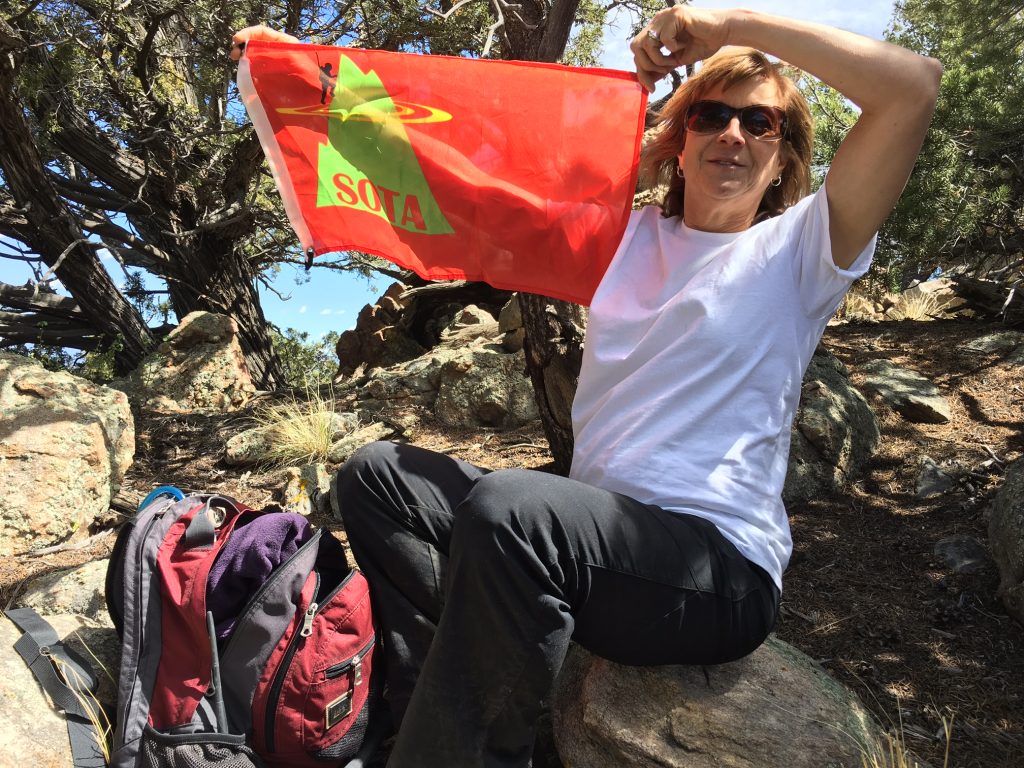
I’ve noticed a few other SOTA peaks are named “something benchmark.” I think that’s essentially an unnamed peak that happens to have a survey benchmark on it. So I looked around for the benchmark and found this marker at the summit:
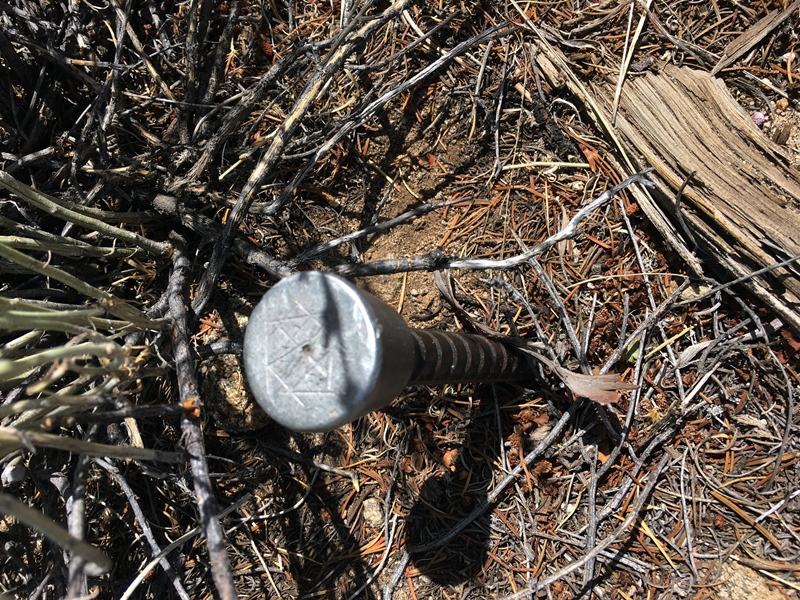
Of course, like many of the lower summits in the Arkansas Valley, this one has a great view of the Collegiate Peaks to the west.
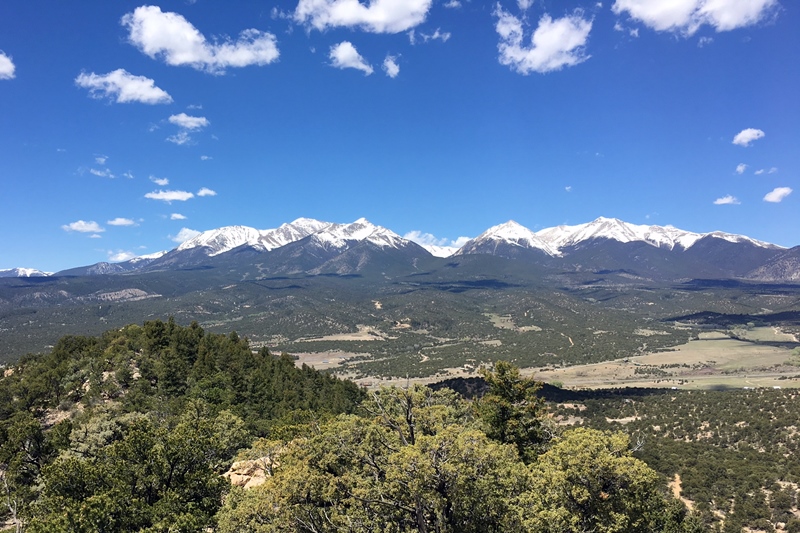
I expect this summit to be a popular SOTA activation because its easy to get to and has a great view. I estimate our total distance traveled as 1.2 miles with an elevation gain of 500 to 600 feet. Sorry, it’s only 2 points.
73, Bob K0NR
The post First SOTA Activation: H-44 Benchmark (W0C/SP-130) appeared first on The KØNR Radio Site.
Bob Witte, KØNR, is a regular contributor to AmateurRadio.com and writes from Colorado, USA. Contact him at [email protected].
 Crypto virus how safe is Digital broadcasting?
Crypto virus how safe is Digital broadcasting?
More and more radio stations have recently been pulling the plug on Shortwave, and AM broadcasting, in favour of digital. There has been a big push in the UK to get the public over to DAB (Digital Audio Broadcasting) or streaming radio via their mobile phones and computers. But, has the case now been made to "keep" a national simulcast AM radio system, like the BBC's Radio 4 Long Wave in the UK, along with global Shortwave radio transmissions for state broadcasting in emergency?
Steve, G1KQH, is a regular contributor to AmateurRadio.com and writes from England. Contact him at [email protected].


